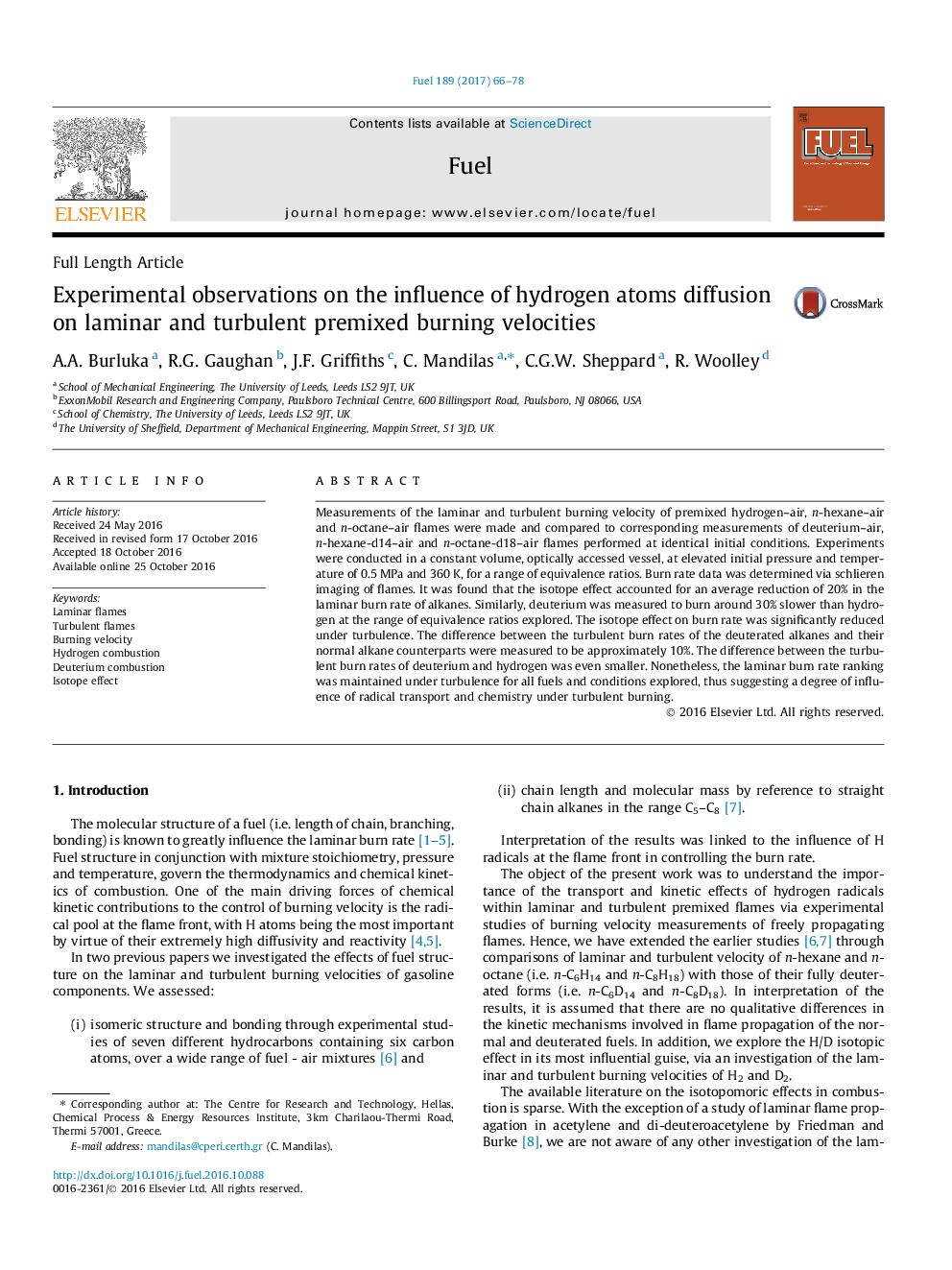| Article ID | Journal | Published Year | Pages | File Type |
|---|---|---|---|---|
| 6475656 | Fuel | 2017 | 13 Pages |
Measurements of the laminar and turbulent burning velocity of premixed hydrogen-air, n-hexane-air and n-octane-air flames were made and compared to corresponding measurements of deuterium-air, n-hexane-d14-air and n-octane-d18-air flames performed at identical initial conditions. Experiments were conducted in a constant volume, optically accessed vessel, at elevated initial pressure and temperature of 0.5Â MPa and 360Â K, for a range of equivalence ratios. Burn rate data was determined via schlieren imaging of flames. It was found that the isotope effect accounted for an average reduction of 20% in the laminar burn rate of alkanes. Similarly, deuterium was measured to burn around 30% slower than hydrogen at the range of equivalence ratios explored. The isotope effect on burn rate was significantly reduced under turbulence. The difference between the turbulent burn rates of the deuterated alkanes and their normal alkane counterparts were measured to be approximately 10%. The difference between the turbulent burn rates of deuterium and hydrogen was even smaller. Nonetheless, the laminar burn rate ranking was maintained under turbulence for all fuels and conditions explored, thus suggesting a degree of influence of radical transport and chemistry under turbulent burning.
